What are the differenttypes & sizes of ogee cutter? |
||||
 |
||||
|
There are several different designs of ogee cutter. The most common ones include: |
||||
Roman ogee router bits |
||||
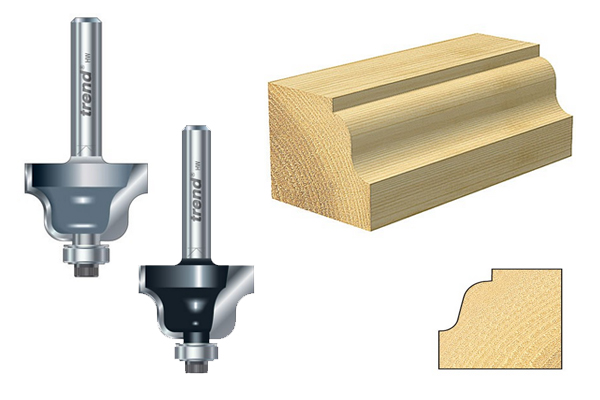 |
Roman ogees usually have convex curves closer to their tips and concave curves near their shanks. This creates moulding with a convex curve at the top and a concave curve at the bottom. Roman ogee cutters can be found in the Trade range and CraftPro range. The Professional TCT range includes various different Roman ogee cutters, such as ones for use with solid surface materials, raised panel cutters, a miniature bearing cutter, and edge moulding cutters. |
|||
Classic ogee router bits |
||||
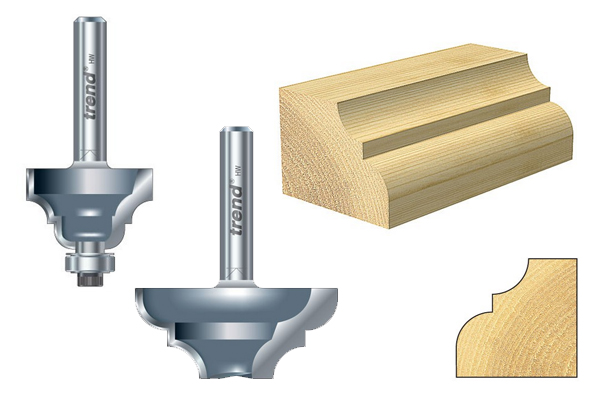 |
Classic ogee cutters have a step in between the concave and convex curve of their sides. They are most commonly used to edge plinths, plaques and picture frames. Ogee and panel cutters that are classed as classic ogee cutters can be found in the Professional TCT range. The CraftPro range also has a small selection of classic ogee cutters. |
|||
Flat ogee router bits |
||||
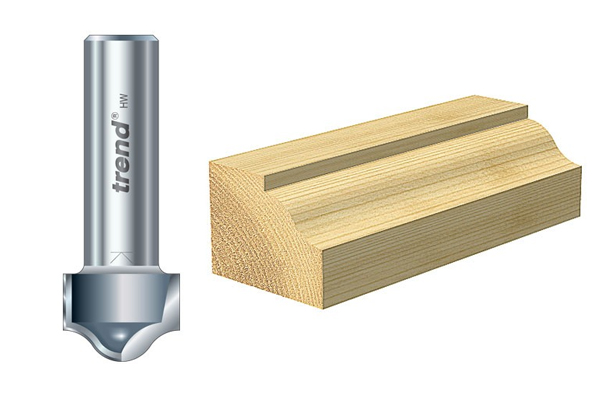 |
Flat ogee cutters are used to create panel effects. They have shallower radii than many other types of ovolo cutter, leaving a thin edge that can be enclosed within a frame to make a panelled cupboard door. Various flat ogee cutters can be found in the Professional TCT range. |
|||
Triple ogee router bits |
||||
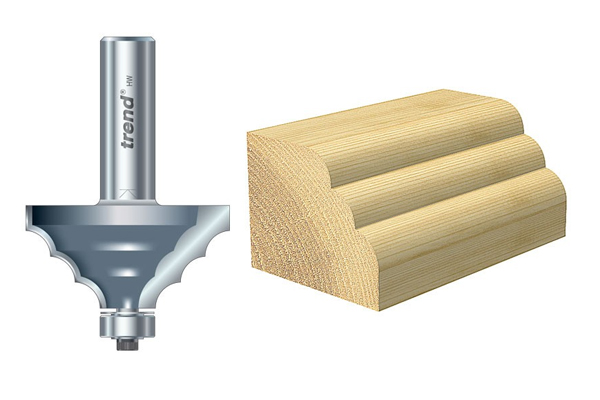 |
Triple ogees create a beaded edge consisting of three concave strips adjacent to one another. This kind of decorative edge can be used to create ornamental features on furniture. Trend currently produce one triple ogee cutter, also known as a triple bead classic cutter. |
|||
Mini ogee router bits |
||||
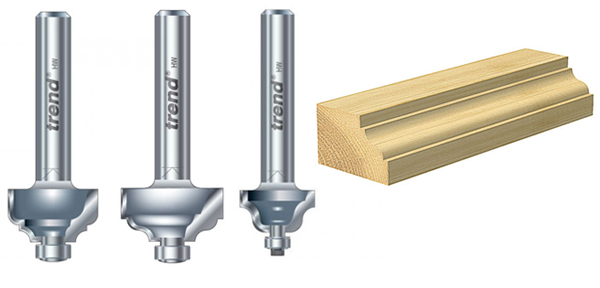 |
These small scale ogee bits are designed for routing small embellishments on furniture, to produce miniature mouldings and trims, or for other reduced scale craft and hobby work. |
|||
 |
||||
Elegant ogee router bits |
||||
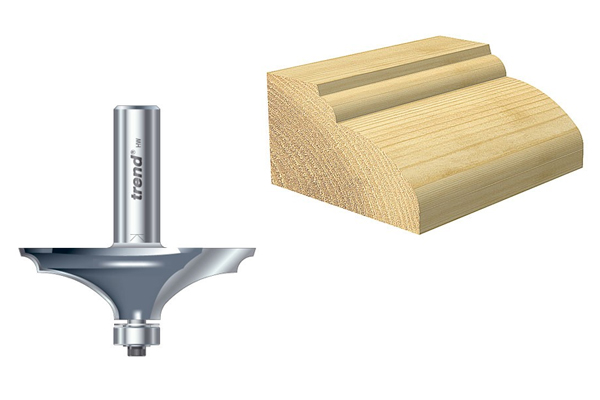 |
Elegant ogee cutters feature a lower cutter that is modified to produce an elongated radius on the outer edge of a workpiece. This type of moulding is most often used on tables and shelves. |
|||
Wavy mould router bits |
||||
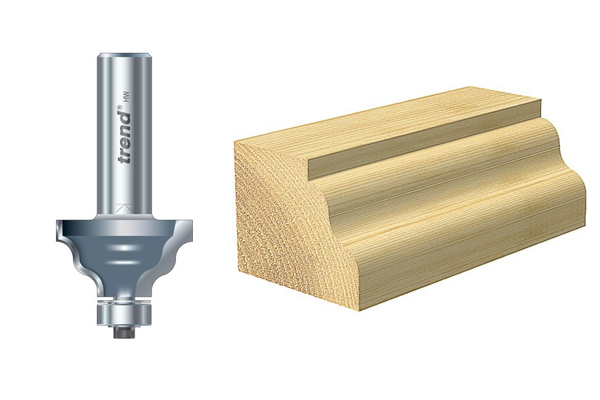 |
This is a uniquely shaped ogee cutter that creates two convex chords, separated by a concave groove of the same width. It can be used to produce a quirk (step) on the top edge of the workpiece if desired, by using a larger size of bearing cutter (attached at the tip). Trend have one wavy mould cutter available. |
|||
Quirk ogee router bits |
||||
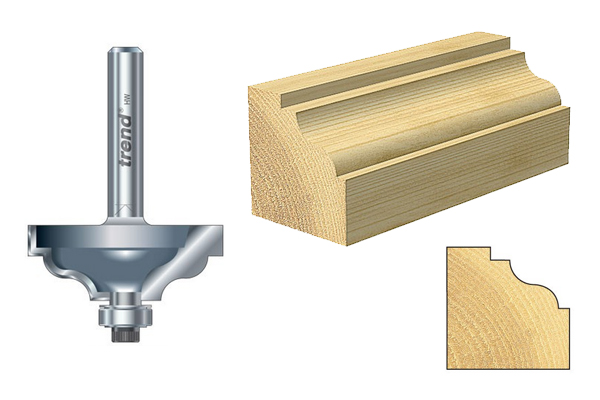 |
Quirk ogee cutters have a step at the top and bottom of their curved sides, allowing them to create an ogee profile with a quirk above and below. These cutters can be found in the CraftPro and Professional TCT range. |
|||
Lamb's tongue scriber and profiler router bits |
||||
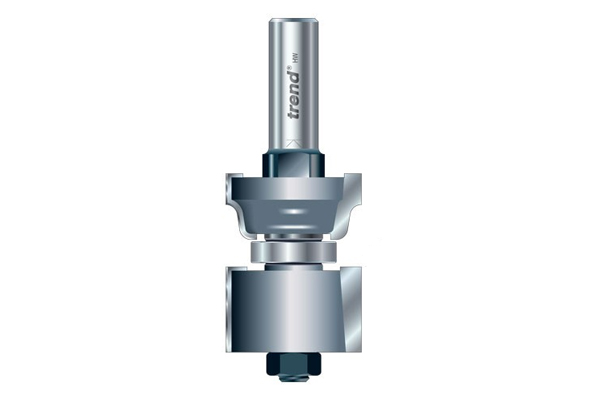 |
Lamb's tongues are a popular feature on furniture (and sometimes skirting). They are often found as a decorative embellishment on chair legs. Traditionally, they were created with chisels and rasps, but they can be made much more easily with a lamb's tongue profiler cutter. |
|||
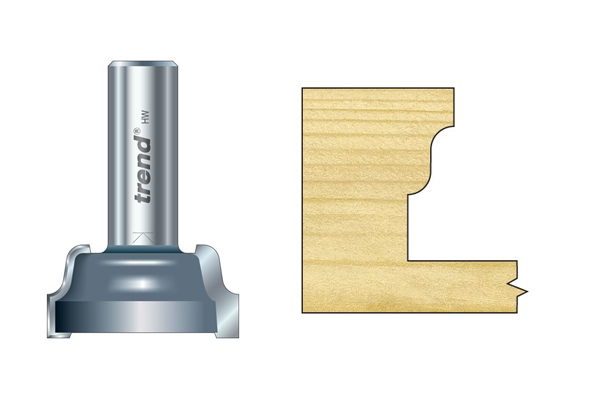 |
A lamb's tongue scriber cutter cuts the opposite shape to its corresponding profile cutter.
This enables lamb's tongue knuckle joints to be created, which may be used in window and door frames. |
|||
Which one should you choose?
|
||||
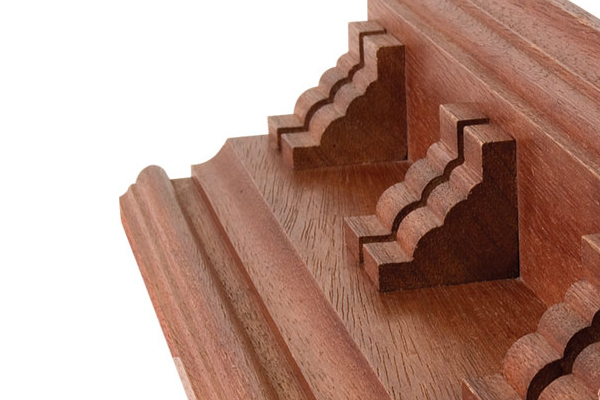 |
As ogee cutters are designed to produce purely decorative cuts, the style you choose will be down to personal preference.
When deciding, you should look for the shape that will complement your project in the best way. |
|||
What ogee router cutter sizes are available? |
||||
|
Ogee router cutters are most often sized according to the following dimensions: |
||||
Shank diameter of ogee router cutters |
||||
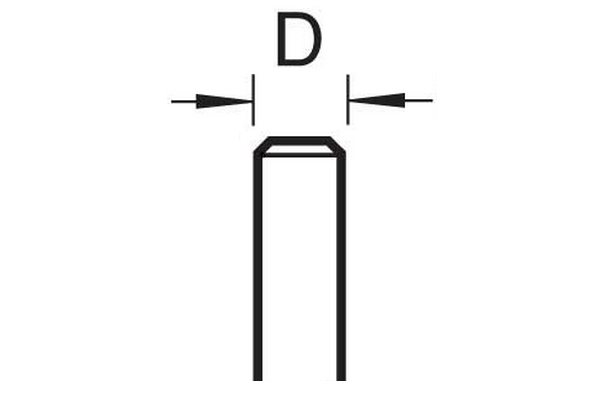 |
The shank diameter is measured across the centre of the shank from any point on its circumference.
Ogee cutters are available with ¼" (6.35mm), 8mm (5/16"), ⅜" (9.5mm), 12mm (½" approx.) and ½" (12.7mm) shank diameters. |
|||
Diameter of ogee router cutters |
||||
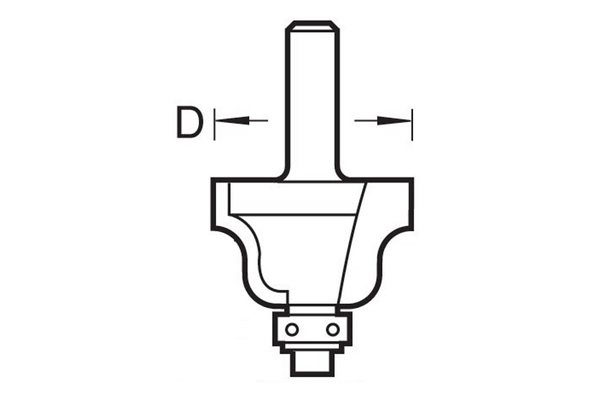 |
The diameter is the maximum width of the router cutter, and is measured from the outermost point of the cutting edges through the centre of the bit. |
|||
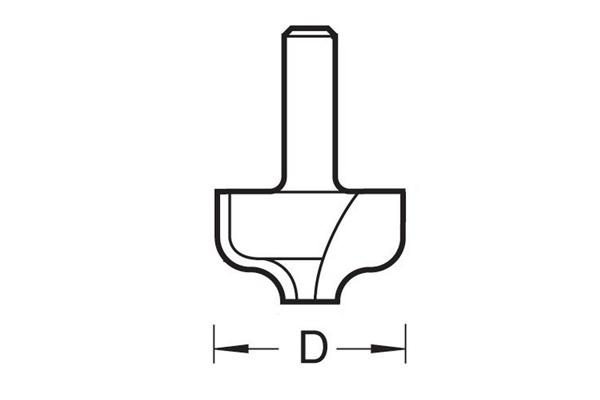 |
For cutters without a guide beneath their cutting edges, the diameter also tells you the maximum width of the path made by the router cutter in one pass.
Ogee router cutters have diameters ranging from 12.7mm (½") to 63mm (2 31/64") |
|||
Cutting edges of ogee router cutters |
||||
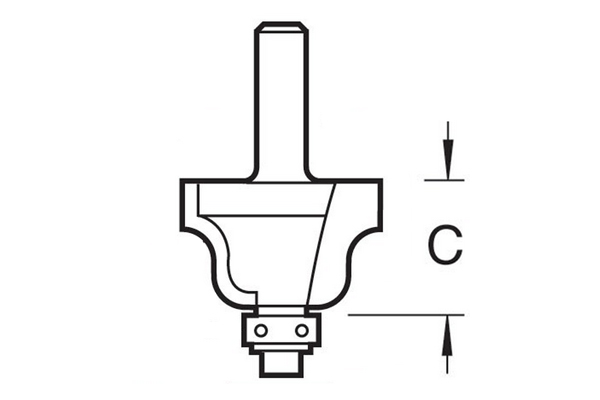 |
LengthThis is the maximum length of the full cutting edge of the router cutter, and is measured from the top of the cutting edge to the bottom.
Ogee cutting edge lengths range from 6mm (15/64") to 28mm (1 7/64"). |
|||
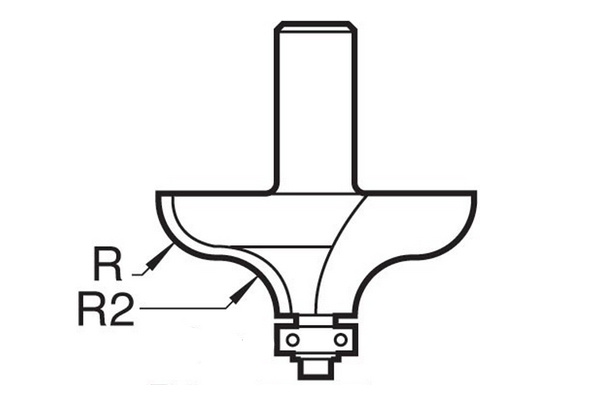 |
RadiusThis is the radius of the ogee cutter's edges. Some ogee router cutters have two or more different radii ground into their cutting edges, in order to produce convex and concave curves of different sizes.
Ogee cutter radii range from 2mm (5/64") to 10.3mm (13/32"). |
|||
 |
||||
Guide diameter of ogee router cutters |
||||
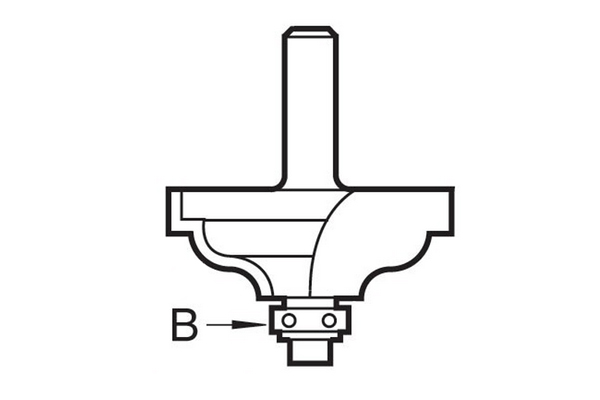 |
Some ogee router cutters are supplied with a pin or ball bearing guide located beneath their cutting edges.
With both bearing and pin-guided cutters, the distance between the outside edge of the guide and tip of the cutting edge will determine the maximum cutting depth. |
|||
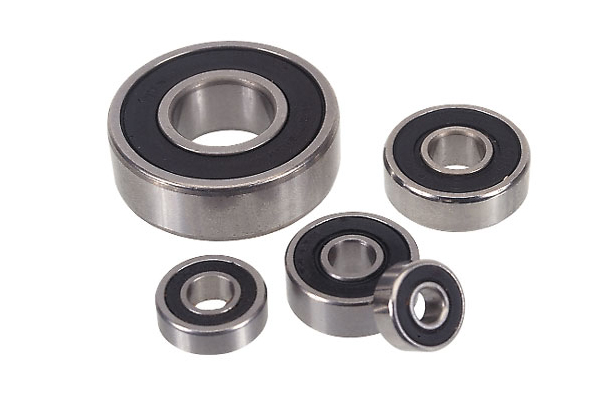 |
BearingsBearings range from 6.3mm (¼") to 35mm (1⅜"). With most ogee cutters, the guide bearing can be removed and replaced with a larger or smaller one to alter the cutting depth of the cutter and the profile it produces.
Some models are supplied with a selection of different sized bearings. |
|||
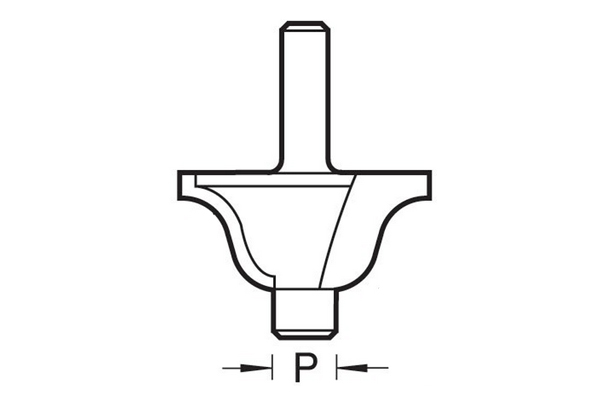 |
PinsOgee router cutters with pin guides usually have pins of 9mm (23/64") in diameter. |
|||







